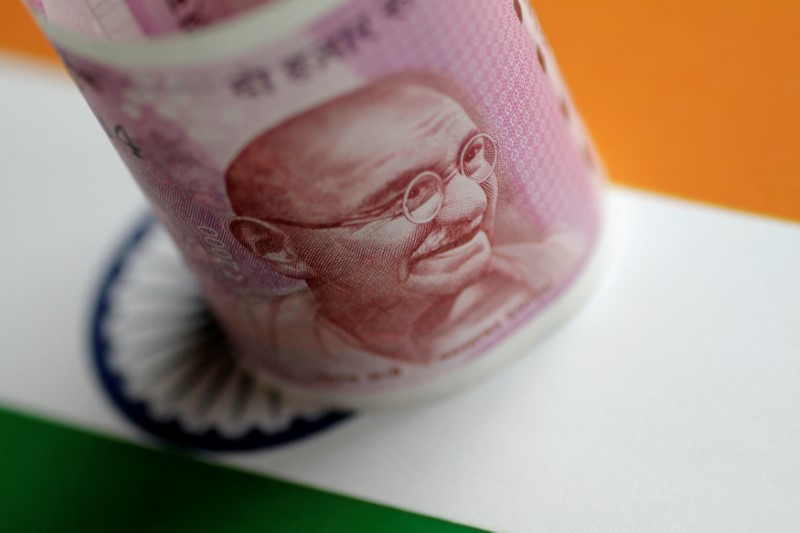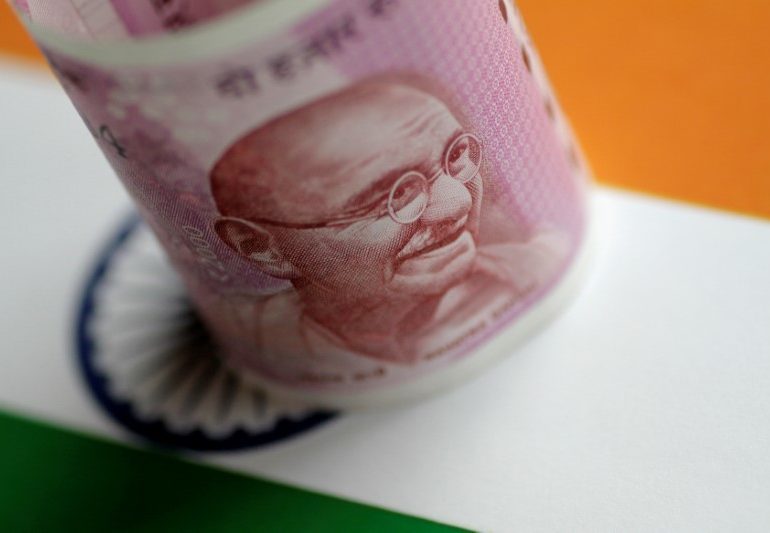 © Reuters. Rupee Tumbles on Worries RBI’s Bond Plan May Add to Money Glut
© Reuters. Rupee Tumbles on Worries RBI’s Bond Plan May Add to Money Glut(Bloomberg) — The Indian rupee tumbled to the lowest in more than four months, with some analysts saying the central bank’s formal plan to buy bonds will add to a liquidity glut.
The fell as much as 1.4% to 74.4288 per dollar, the weakest since Nov. 18. The central bank said Wednesday it will buy one trillion rupees ($14 billion) of bonds in the secondary market this quarter, in addition to its existing liquidity operations.
“A defined primary liquidity infusion via the bond program is de-facto a secondary QE of RBI,” said Madhavi Arora, economist at Emkay Global Financial Services Ltd. “This will imply massive narrow money growth and primary liquidity which is clearly going to put depreciation pressure on INR.”
The unwinding of carry trades by offshore traders and dividend payout by a corporate also hurt the rupee, according to two Mumbai-based traders who didn’t want to be identified as they aren’t authorized to comment publicly.
The loss on Wednesday has turned the rupee into Asia’s worst performer for the month. A surge in virus infections is also rekindling concerns the authorities may bring back stricter and wider lockdowns. India’s richest state Maharashtra, that houses the financial hub Mumbai, has ordered company employees to work from home and has also shut shopping malls.
“Markets are nervous due to the worsening Covid situation in India, and talks of lockdowns potentially becoming nationwide, and more prolonged rather than what is just announced in Maharashtra, said Unnati Parekh, head of currency derivatives at Kanji Pitamber & Co.
©2021 Bloomberg L.P.
Fusion Media or anyone involved with Fusion Media will not accept any liability for loss or damage as a result of reliance on the information including data, quotes, charts and buy/sell signals contained within this website. Please be fully informed regarding the risks and costs associated with trading the financial markets, it is one of the riskiest investment forms possible.

